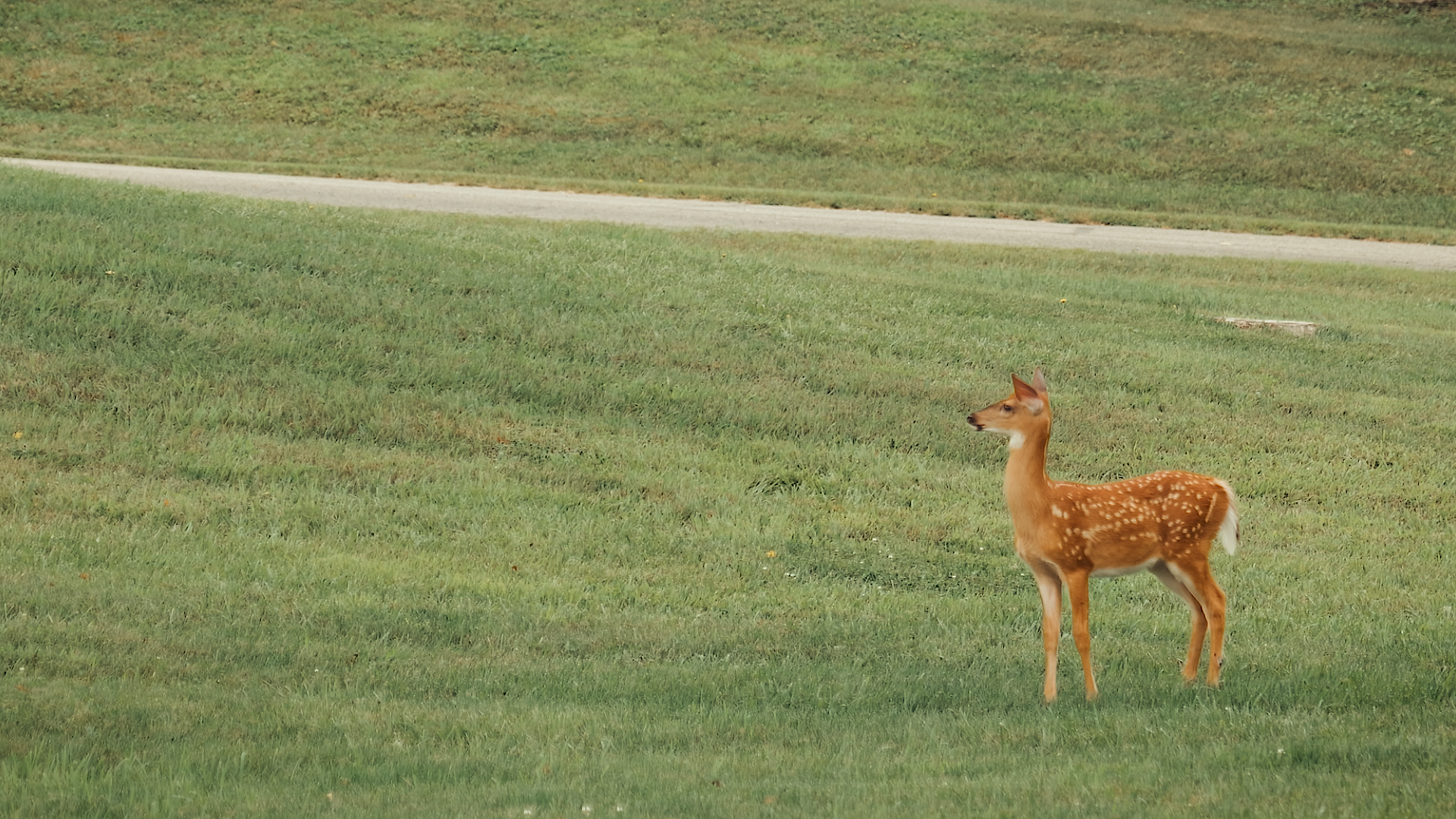
Natural Areas
Fernwood's 55-acre nature preserve is both strikingly beautiful and unusually diverse. A 125-foot drop in elevation has given rise to several natural communities, including dry and wet forests, young second-growth woods, streams and ponds, and a carefully reconstructed tallgrass prairie.
Trails of varying lengths provide access to the preserve. Some climb steeply while others offer gentle grades. All are kept simple so visitors remain close to nature. Surfaces are wood-chipped or bare earth, and there are steps on hilly portions and boardwalks over wet areas. Benches provide places to rest and observe the beautiful surroundings.
Native Plants
Click on the link below to view a complete list of the species found in Fernwood’s prairie and woodlands.
Birding
Be sure to stop by the Sims Education Center and the Nature Center to observe our bird feeding stations, which attract a wide variety of species year-round. Early May is especially exciting as ruby-throated hummingbirds, Baltimore orioles, rose-breasted grosbeaks, and indigo buntings return for the summer season.
Fernwood’s diverse habitats provide for excellent birding throughout the grounds. 177 species have been found in our forests, wetlands, prairie, arboretum, and gardens. Wild turkeys, eastern phoebes, house wrens, chipping sparrows, song sparrows, and cardinals are among those to look for in the gardens. Along the St. Joseph River, you might find great blue herons, kingfishers, and winter ducks such as mergansers, bufflehead, and common goldeneye. In the forests, listen for scarlet tanager, yellow-throated vireo, wood thrush, and Acadian flycatcher during the breeding season. Visit the tallgrass prairie to enjoy common yellowthroat and goldfinches. A walk through the Arboretum turns up bluebirds, field sparrow, brown thrasher, and indigo buntings. Please click here for the Birds of Fernwood checklist.
Rare birds found at Fernwood include common loon (threatened), bald eagle (special concern), osprey (special concern), and prothonotary warbler (special concern) along the St. Joseph River. Red-shouldered hawk (threatened), cerulean warbler (threatened), yellow-throated warbler (threatened), and hooded warbler (special concern) prefer Fernwood’s wet forests. With luck, dickcissels (special concern) are sometimes heard singing in the tallgrass prairie.
Fernwood's Bluebird Trail
Thanks to support from our dedicated Bluebird Trail Monitors, Fernwood has an active bluebird trail. One box is located in the Entry Garden with a live nest camera feed to a monitor in the Visitors Center with the rest of the boxes scattered throughout the Arboretum. In 2019, 13 chicks fledged, a 57% success rate for chicks out of nests and a 67% success rate for chicks out of eggs. Contact Fernwood if you would like to volunteer as a nestbox monitor.
Berrien County Birdathon
Held on the third Saturday in May at the peak of spring migration, the Berrien County Birdathon is a team birdwatching event, with donations for the Fernwood team supporting the Environmental Studies Program. Each year, the Environmental Studies Program allows nearly 4000 area school children to participate in hands-on nature education programs at Fernwood or in their classrooms.
Berrien Birding Club & Berrien County Birding Destinations Map
For more information on the Berrien Birding Club and to download a Berrien County Birding Destinations Map, please visit www.berriencounty.org/434/Birding.
Bird Nest Cams
Want to watch active bird nests and feeders? Check out the links below.
Cornell Lab of Ornithology
Decorah, Iowa Bald Eagles
St. Joseph County Parks, Indiana Bald Eagles

Native Wildlife
With a diversity of habitats, a wide variety of native wildlife are found at Fernwood. Fox squirrels and grey squirrels (some with black fur) are common at the Sims Education Center and Nature Center feeding stations. A visit to the South Vista Pond allows you to observe green frogs, bull frogs, red-winged blackbirds, and dragonflies. Groundhogs are sometimes spotted in the gardens, and both deer and wild turkey can be found anywhere on the grounds, along with box turtles and garter snakes. Stop by the Big Pond to watch painted turtles, snapping turtles, bluegill, and large-mouth bass from the T Dock. Common carp, steelhead trout, and whirligig beetles provide entertainment at the River Dock.
Wildlife Rehabilitation
Fernwood receives many phone calls concerning orphaned or injured animals. Baby animals are rarely abandoned by their parents, which are often nearby watching them. If you are certain an animal has been abandoned or is injured, contact a rehabber from your state DNR’s lists (links below) before attempting to care for or handle the animal. Please do not bring the animal to Fernwood. We are not licensed and do not have the facilities to handle abandoned or injured wildlife.
If you must contain the animal, please use gloves when handling it. Towels or blankets are useful to safely pick up the animal, place it in a large box or tote with the blanket/towel, add a shallow dish of water, and secure the top/lid while allowing air in. Keep it in a warm, quiet location until you receive further instructions from a rehabber.
Rare Wildlife
Many of Fernwood’s wildlife are rare and protected species. Species include a healthy population of state special concern grey rat snakes, which can grow up to 6’ in length or more – watch for them both in the woodlands and the gardens. Queen snakes, a special concern species, are typically found basking in the sun near the St. Joseph River. While bat populations are declining nationwide due to White Nose Syndrome, little brown bats (special concern) still flit over the gardens at dusk. Also a special concern species, the pipevine swallowtail butterfly often lays eggs on the pipevine on the Bauer Terrace, with their caterpillars hatching in mid-summer.





